Twelve ways to fix no sound on computer
Jul. 09, 2025 / Updated by Seraphina to Windows 10
Computer suddenly has no sound? Sound output abnormal? First, rule out physical damage to the hardware itself. Connect your headphones or speakers to another computer and see if the sound outputs normally. If it does, then it's not a hardware issue.Now, keep reading. I've compiled a total of 12 methods to fix no sound on the computer! They are very detailed and comprehensive, covering every aspect for you to consider. Believe me, they can help you solve the problem of abnormal computer sound!

Method 1: Check Speaker Output
If you have multiple audio output devices, ensure you've selected the appropriate one:
Click the speaker (volume) icon in the taskbar's bottom-right corner.
Click the small arrow pointing upwards to open the list of audio devices connected to your computer.

Check if the currently selected device is the one you're using, like speakers or headphones.
Method 2: Run Audio Troubleshooter
The audio troubleshooter can automatically fix some sound issues:
In the Windows search box at the bottom left, type "Find and fix audio playback problems" and open the search result, then click "Next".
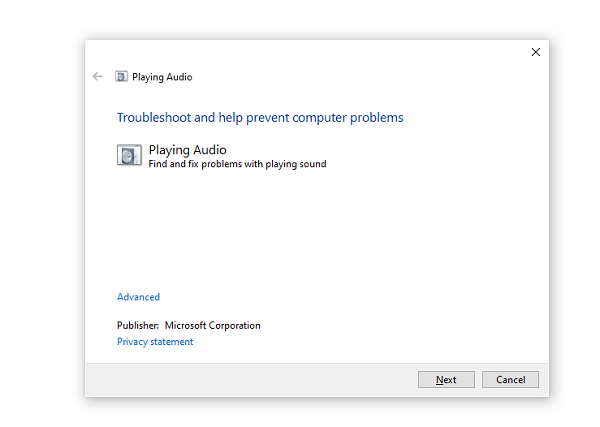
Choose the device you want to troubleshoot and proceed through the troubleshooting process.
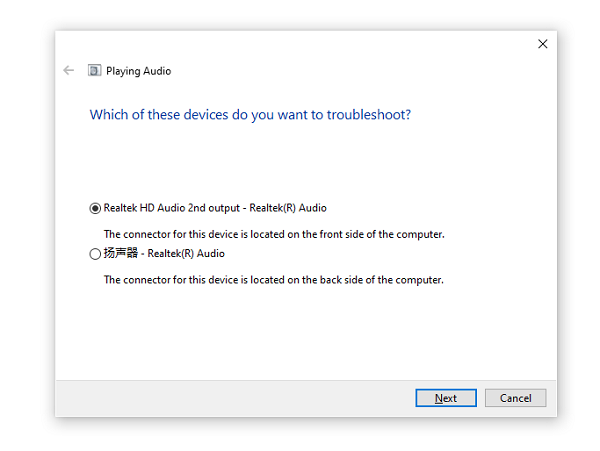
Alternatively, you can launch the troubleshooter from audio settings:
Click Windows "Start" > "Settings" > "System" > "Sound" > "Troubleshoot."
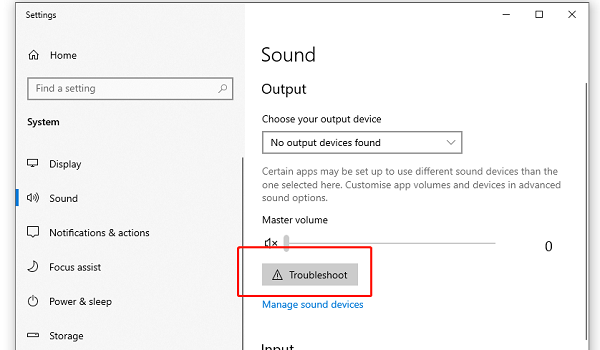
Method 3: Repair Sound Card Drivers
(1). Hardware issues may be caused by outdated or incompatible drivers. Ensure your sound card drivers are up to date. If not, try uninstalling and letting Windows reinstall them.
(2). If you started experiencing sound issues after installing updates, try rolling back your sound card drivers.
(3). The simplest way to solve driver issues is to use professional driver software, which can easily install, update, and uninstall sound card drivers.
Click → "Driver Talent" ← to download and install this professional driver software.
Click "Scan" on the homepage; "Driver Talent" will scan your computer to detect and display the status of the drivers, whether they are normal or abnormal.
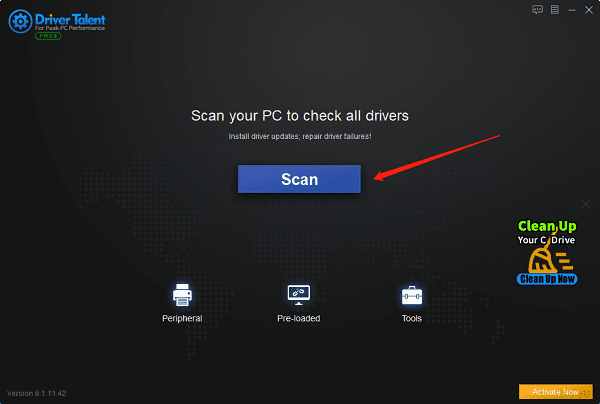
Click "Download" next to the sound card; the software will automatically update missing or outdated drivers and install the correct version.
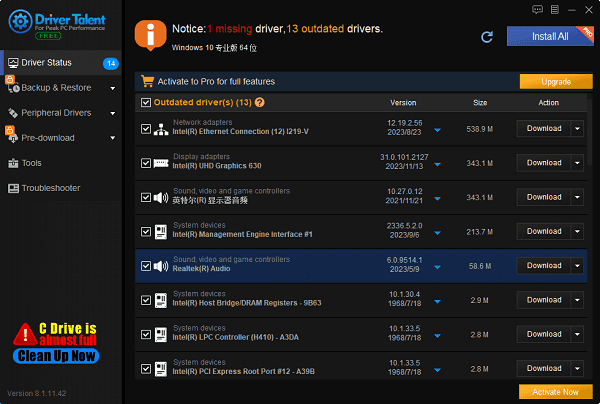
Alternatively, you can manually update the sound card drivers:
Right-click the Windows Start button to open Device Manager.
Double-click "Sound, video and game controllers" to expand it.
Right-click your audio device, such as headphones or speakers, and select "Update driver".
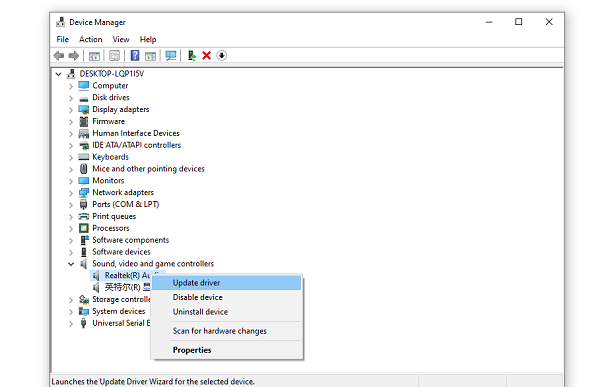
Choose "Search automatically for drivers" and follow the instructions to complete the update.
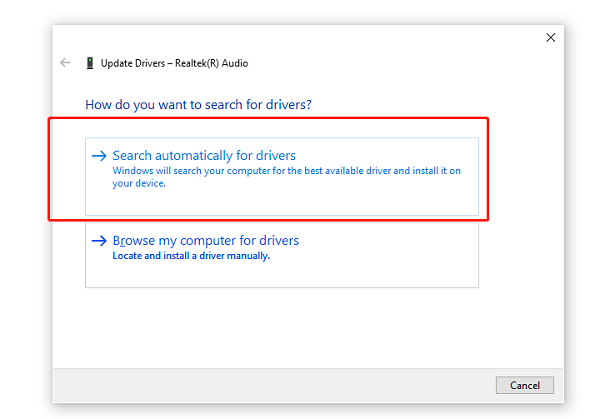
(4).If Windows doesn't find new drivers, you'll need to search and download them from the device manufacturer's website.
(5). If updating the driver doesn't work, try uninstalling your sound card driver.
(6). Then, restart your computer to see if the problem is resolved.
(7). If these options don't work, try using Windows' built-in generic audio driver.
How to install Windows' built-in generic sound card driver:
Right-click the Windows Start button to open Device Manager.
Double-click "Sound, video and game controllers" to expand it.
Right-click your audio device, such as headphones or speakers, and select "Update driver".
Choose "Browse my computer for drivers"> "Let me pick from a list of available drivers on my computer".
Select the audio device for which you want to update the driver, click Next, and then follow the instructions to install.
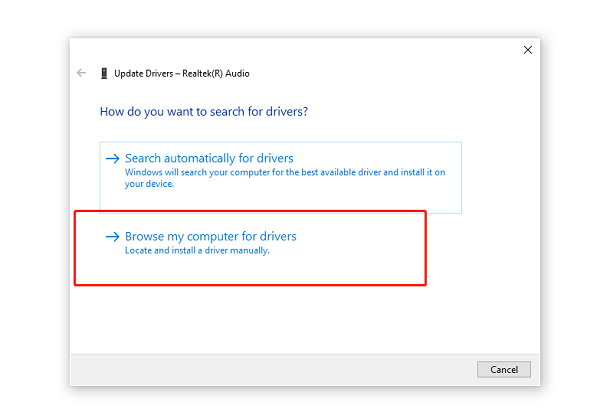
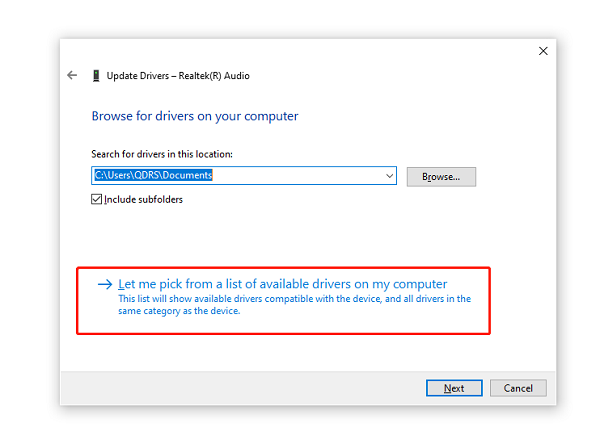
Select the audio device for which you want to update the driver, click Next, and then follow the instructions to install.
If your computer's sound was normal before Windows updates but now has issues, try rolling back the sound card driver:
Right-click the Windows Start button to open Device Manager.
Double-click "Sound, video and game controllers" to expand it.
Right-click your audio device and select "Properties".
Click the "Driver" tab and select "Roll Back Driver".
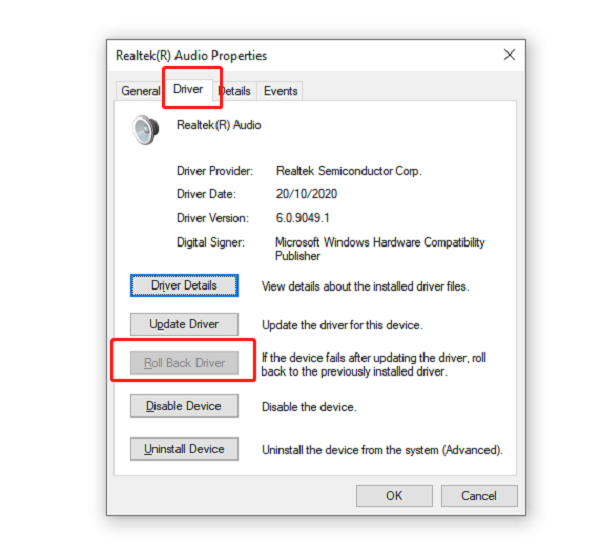
Method 4: Confirm All Windows Updates Are Installed
Click the Windows Start button, open Settings, then click "Update & Security".
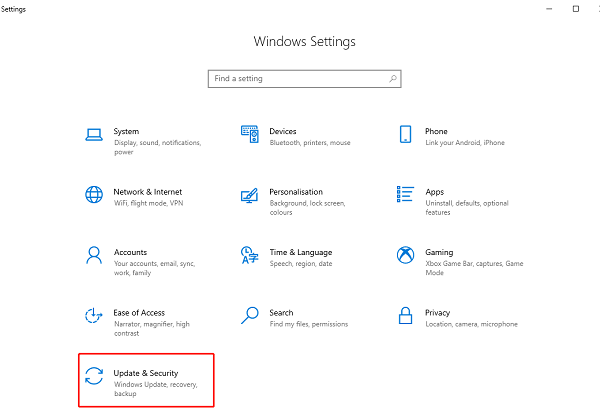
Click "Windows Update" in the left sidebar, then click "Check for updates" on the right.
If it says "You're up to date", move to the next prompt. If updates are available, select "Install now".
Choose the updates you want to install, then click Install.
Restart your computer and check if the sound works properly.
Method 5: Check Cable Connections, Plugs, Jacks, Volume, Speakers, and Headphones
Check if the wires or cables at the connections of your speakers and headphones are loose.
If you have multiple jacks, make sure all wires and cables are plugged into the correct jacks. If unsure which jack matches which wire, consult the hardware manufacturer or try them one by one to see if it works.
Note: Some systems use green jacks for output, pink jacks for microphone input, and others may be labeled "headphone" or "mic".
Ensure the power is turned on.
Make sure the mute settings are not activated and try increasing all volume controls.
Try connecting the speakers and headphones to different USB ports.
Method 6: Check Sound Settings
Ensure audio devices aren't muted or disabled:
Right-click the speaker icon in the taskbar's bottom-right corner and select "Open Volume Mixer".
You'll see a set of volume controls for devices; make sure none are muted. If any are muted, you'll see a red circle with a line through it beside the volume control. Click on the volume control to unmute it.
Check your device properties to ensure it's not disabled. Click "Start" > "Settings" > "System" > "Sound".
Select your audio device, then click "Device properties" for both output and input.
Uncheck the Disable box.
Method 7: Set Your Audio Device as Default
(1). If you're using USB or HDMI to connect to an audio device, such as headphones or speakers, you may need to set that device as the default audio device.
(2). If you're using an external monitor without built-in speakers, ensure that the monitor isn't selected as your default output device; otherwise, you might not hear any sound.
In the search box on the taskbar, type "Control Panel" and open it.
Select "Hardware and Sound" > "Sound".
On the "Playback" tab, right-click your audio device from the list and select "Set as Default Device", then click "OK".
Method 8: Disable Audio Enhancements
Sometimes, enabling audio enhancements can cause audio issues. Disabling this feature might resolve your problem:
In the search box on the taskbar, type "Control Panel" and open it.
Select "Hardware and Sound" > "Sound".
On the "Playback" tab, right-click "Default Device" and select "Properties".
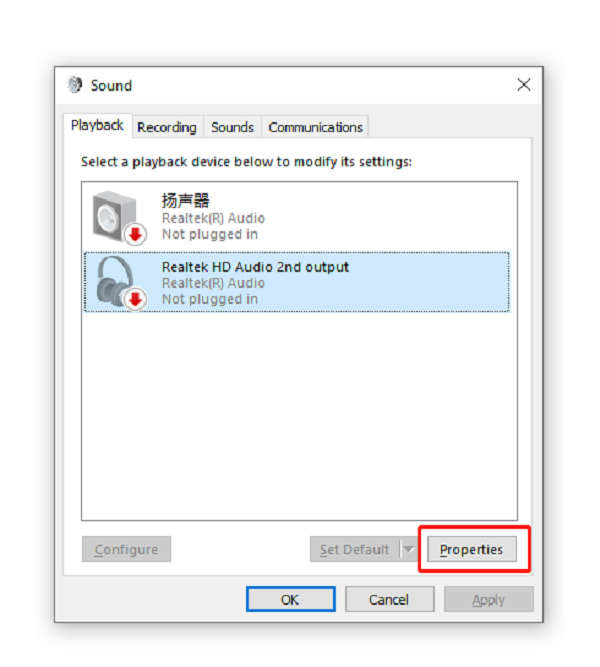
In the "Enhancements" tab, check the "Disable all sound effects" box, click "OK", then try playing audio from your device.
If this doesn't work, right-click another default device (if you have one) on the "Playback" tab, repeat steps 3-4 for each device.
Method 9: Restart Audio Services
(1). In the search box on the taskbar, type "Services" and open it from the results.
(2). Right-click each of the following services and select "Restart":
Windows Audio
Windows Audio Endpoint Builder
Remote Procedure Call (RPC)
Method 10: Try Different Audio Formats
In the search box on the taskbar, type "Control Panel" and open it.
Select "Hardware and Sound" > "Sound".
On the "Playback" tab, right-click "Default Device" and select "Properties".
Click the "Advanced" tab, under "Default Format", change the setting, click "OK", then test your sound.
If unsuccessful, repeat step 4, trying different settings.
Method 11: Restart to Apply Installed Updates
Many updates require you to restart your device. Check and see if there are any pending updates that require a restart:
Save your data and close all open applications.
Click "Start" > "Power". If there are updates waiting to be installed, you'll see options for "Update and Restart" or "Update and Shutdown".
Choose one of the restart options to apply the updates.
Method 12: Check Microphone Privacy Settings
Click the Start button, open Settings.
Select "Privacy", then click "Microphone" from the left menu.
Under "Allow apps to access your microphone", ensure it's toggled on.
If you encounter this issue with a specific app, scroll down to "Choose which Microsoft Store apps can access your microphone" and ensure the toggle next to the app is on.
These are the 12 methods to fix abnormal computer sound issues! Isn't it very practical? If you encounter driver-related issues with network cards, graphics cards, Bluetooth, sound cards, etc., you can download "Driver Talent" to detect and repair them. Additionally, Driver Talent supports driver downloads, installations, backups, etc., providing flexible driver management.
See also:
How to Open Task Manager on Computer
How to download Brother printer drivers
Computer Win key unresponsive, how to solve
Is it essential to update computer drivers
How to Restore the Missing Volume Icon on Computer

|
ExplorerMax |

|
Driver Talent for Network Card | |
| Smart and advanced file explorer tool for Windows platforms | Download & Install Network Drivers without Internet Connection | |||
| 30-day Free Trial | Free Download |







